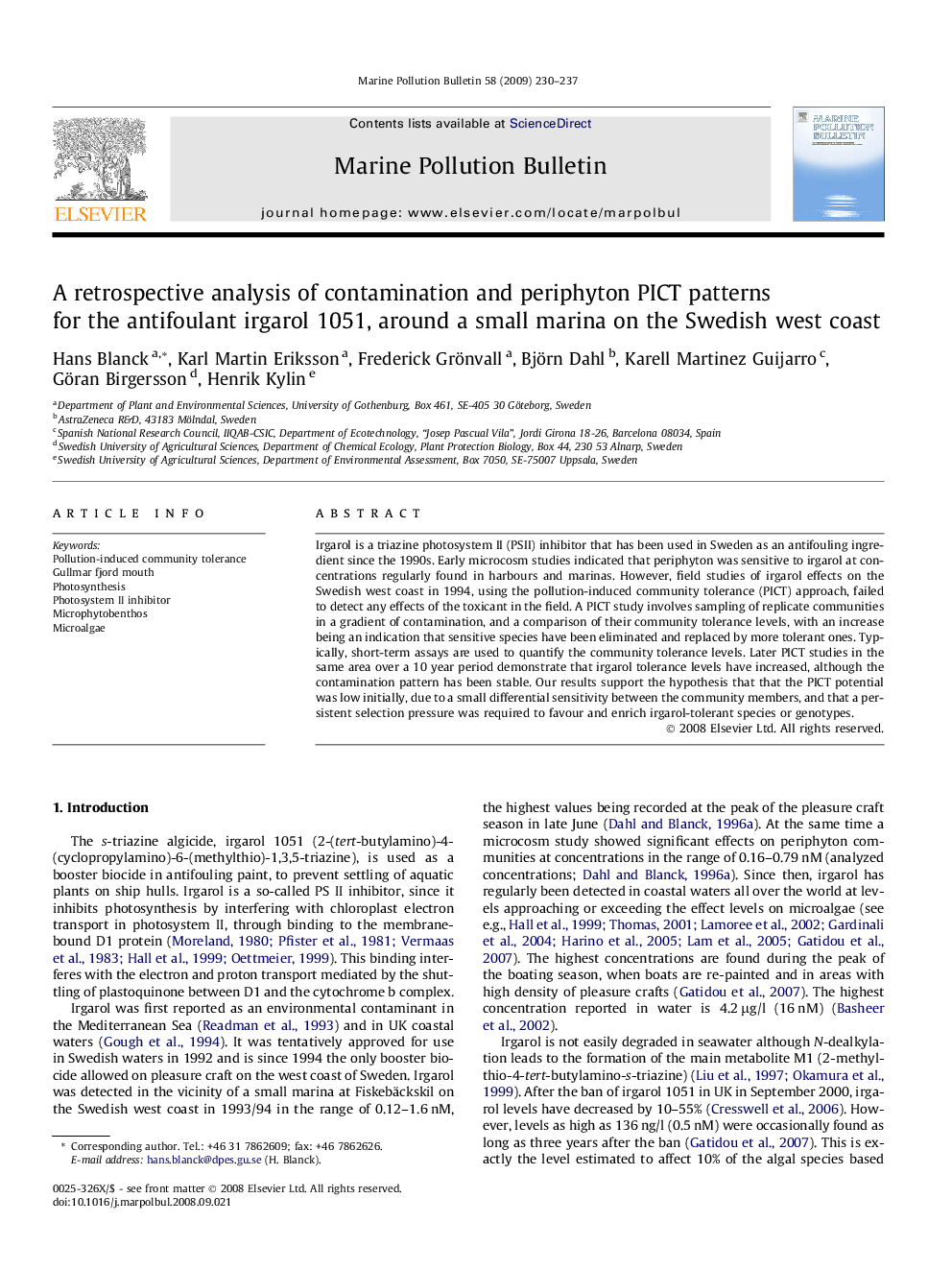| Article ID | Journal | Published Year | Pages | File Type |
|---|---|---|---|---|
| 4477125 | Marine Pollution Bulletin | 2009 | 8 Pages |
Irgarol is a triazine photosystem II (PSII) inhibitor that has been used in Sweden as an antifouling ingredient since the 1990s. Early microcosm studies indicated that periphyton was sensitive to irgarol at concentrations regularly found in harbours and marinas. However, field studies of irgarol effects on the Swedish west coast in 1994, using the pollution-induced community tolerance (PICT) approach, failed to detect any effects of the toxicant in the field. A PICT study involves sampling of replicate communities in a gradient of contamination, and a comparison of their community tolerance levels, with an increase being an indication that sensitive species have been eliminated and replaced by more tolerant ones. Typically, short-term assays are used to quantify the community tolerance levels. Later PICT studies in the same area over a 10 year period demonstrate that irgarol tolerance levels have increased, although the contamination pattern has been stable. Our results support the hypothesis that that the PICT potential was low initially, due to a small differential sensitivity between the community members, and that a persistent selection pressure was required to favour and enrich irgarol-tolerant species or genotypes.
